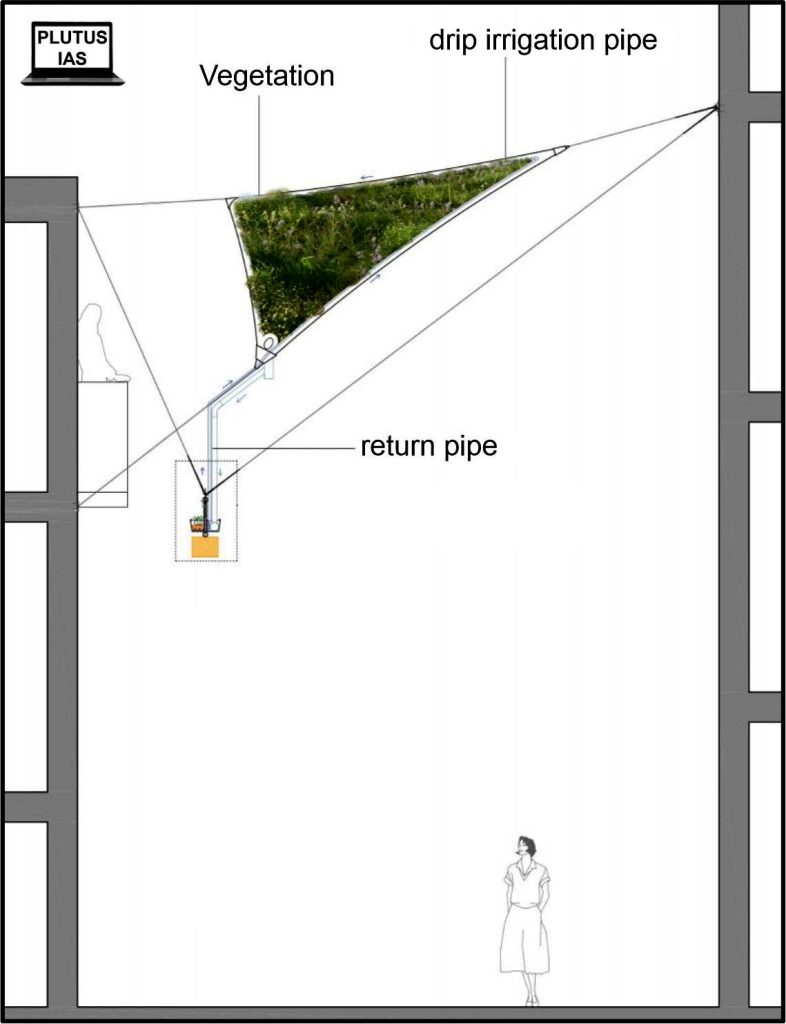25 Aug Vegetated Canopies
This article covers “Daily Current Affairs” and the topic details “Vegetated Canopies”. The topic “Vegetated Canopies” has relevance in the “Ecology and Environment” section of the UPSC CSE exam.
For Prelims:
What are Vegetated Canopies?
For Mains:
GS3: Ecology and Environment
Why in the news?
In a recent development in Spain, tensioned sail-like vegetated awnings or canopies known as “Greenshades” have been strategically installed on the facades of buildings.
Vegetated Canopies
- Vegetated canopies are innovative structures designed to reintroduce greenery into urban landscapes.
- Inspired by the natural canopies found in forests and diverse plant ecosystems, these canopies play a crucial role in mitigating the urban heat island effect and enhancing the overall environmental quality of urban areas.
- This installation approach not only adds an aesthetic dimension to the urban architecture but also serves as a practical solution for reintroducing green elements in areas where traditional planting is challenging.
- Emulating Nature’s Canopies:
-
- Mimicking the canopy formations observed in forest ecosystems, these vegetated awnings recreate a semblance of natural green cover.
-
- By doing so, they provide shade, reduce direct sunlight exposure, and create a more pleasant atmosphere in commercial streets and public spaces.
-
- This is particularly valuable in areas where the presence of trees and vegetation is limited.
- Hydroponic Growth System:
-
- The vegetation integrated within these awnings grows using a hydroponic growth system.
-
- This method utilises a water supply point to provide the plants with the necessary moisture and nutrients. Additionally, a water outlet is incorporated into the design to facilitate efficient drainage.
-
- This innovative approach ensures that the greenery thrives even in non-traditional planting environments.

Benefits of Vegetated Canopies
- Cooling Effects via Evapotranspiration
-
- Singular Green’s innovative canopy design efficiently reduces temperatures in both immediate areas and beneath the awnings.
- Achieved through evapotranspiration, where plants transfer water to the atmosphere, this cooling process enhances comfort.
- Air Quality Improvement through Plant Selection
-
- Carefully chosen plants possess a special ability to absorb gases, including pollutants like carbon monoxide and nitrogen oxide.
- This contributes to better urban air quality and healthier living conditions.
- Noise Reduction with Sound Wave Absorption
- Vegetated canopies excel at absorbing sound waves, minimising noise pollution and creating a more serene urban environment.
- Incorporating sound-absorbing substrates enhances the auditory experience.
- Oxygen Generation and Gas Filtration
-
- Surprisingly, a single square metre of these canopies produces a year’s worth of oxygen for an individual.
- Moreover, they serve as natural filters, removing harmful gases from the air and thus improving overall air quality.
- Efficient Water and Lighting Integration
-
- Beyond their green benefits, these canopies facilitate centralised water and lighting installations.
- Integrated lights equipped with motion sensors respond to real-time needs, promoting energy-efficient urban infrastructure.
- Promoting Biodiversity and Ecosystem Health
-
- Introducing these canopies into urban spaces fosters biodiversity by creating habitats for diverse wildlife.
- This initiative aligns with the vision of sustainable, nature-friendly cities, nurturing a harmonious urban ecosystem.
In the face of climate change-induced challenges, our response must be proactive, multifaceted, and holistic. The success of vegetated canopies as a means to combat extreme heat waves demonstrates that nature-inspired solutions have the power to transform urban environments into havens of sustainability, resilience, and well-being. By embracing such strategies and embarking on a collective journey, we can build cities that thrive in harmony with the planet.
Q1. With reference to Urban Vegetated Canopies, consider the following statements:
- Urban vegetated awnings are designed to reintroduce greenery into urban environments, providing various ecological and aesthetic benefits.
- These canopies rely solely on traditional soil-based planting methods, which often lead to high water consumption and maintenance efforts.
- Urban vegetated canopies are completely sealed structures, preventing any natural air circulation and reducing air pollution.
Which of the statements given above is/are correct?
(a) 1 only
(b) 2 and 3 only
(c) 3 only
(d) None
Answer: (a)
Q2. With reference to Urban Vegetated Canopies, consider the following statements:
- These canopies can help mitigate the urban heat island effect by providing shade and reducing temperatures in city areas.
- Vegetated canopies often use hydroponic systems to support plant growth, ensuring water and nutrients are efficiently delivered to the plants.
- Vegetated canopies have no impact on noise pollution in urban areas and do not possess any sound-absorbing properties.
How many of the abovementioned statements are correct ?
(a) Only one
(b) Only two
(c) All three
(d) None
Answer: (b)
Q3. Urban heat island effect is a pressing concern in rapidly urbanising areas. Explain how the installation of vegetated canopies can address this issue. Illustrate with real-world examples.



No Comments